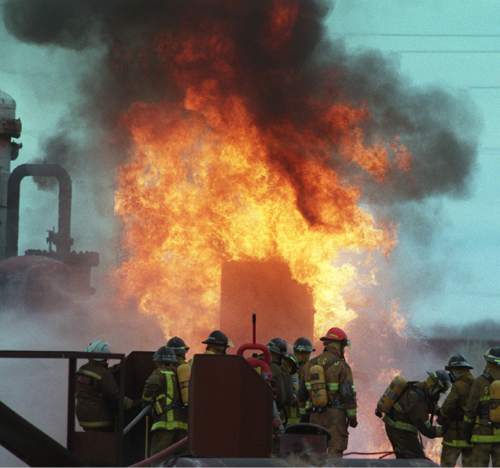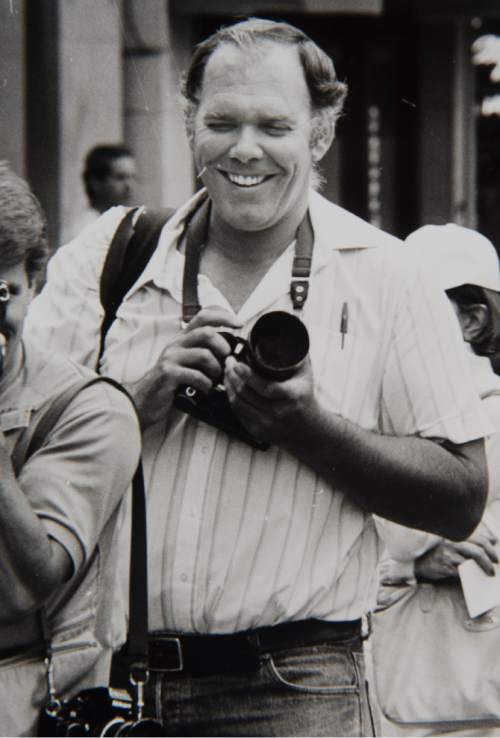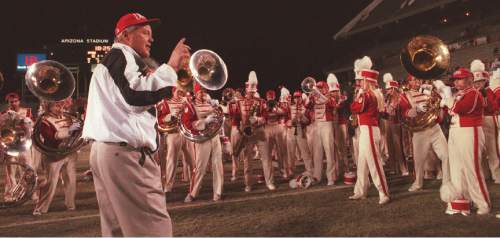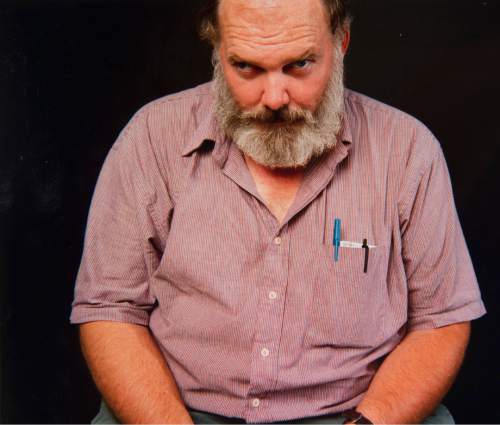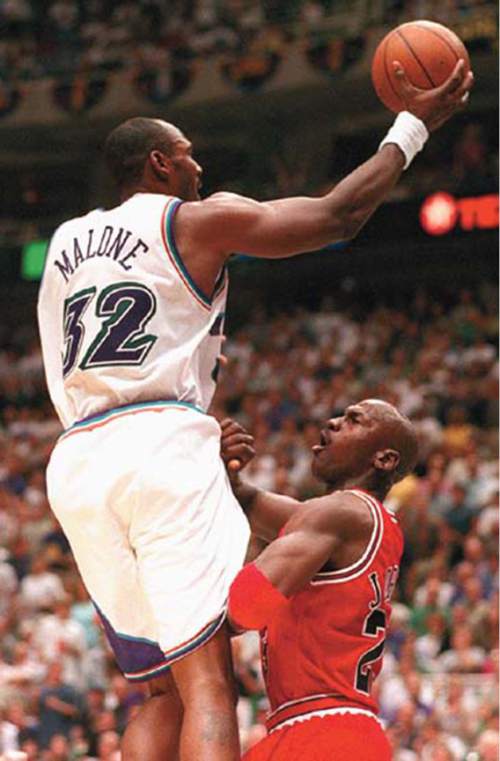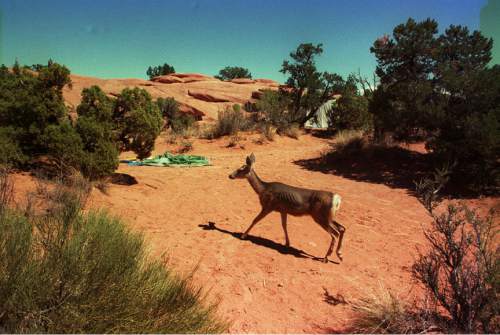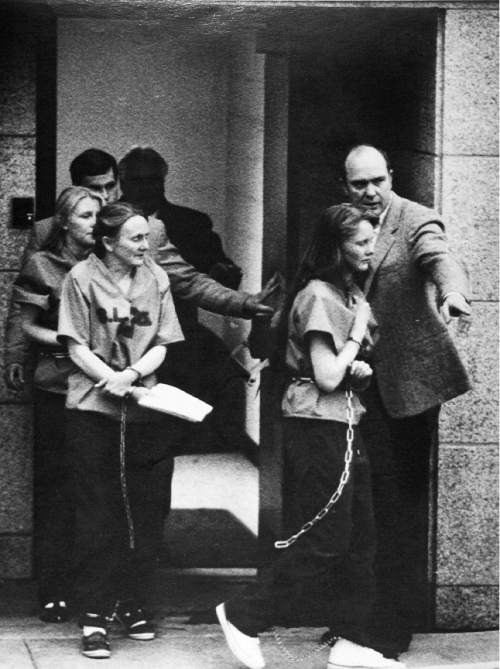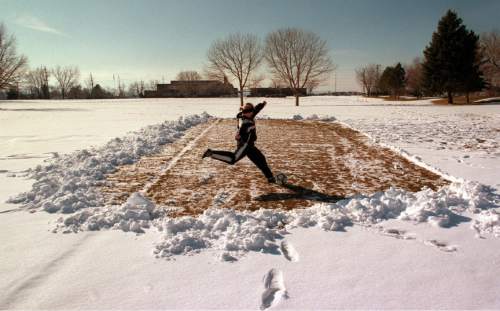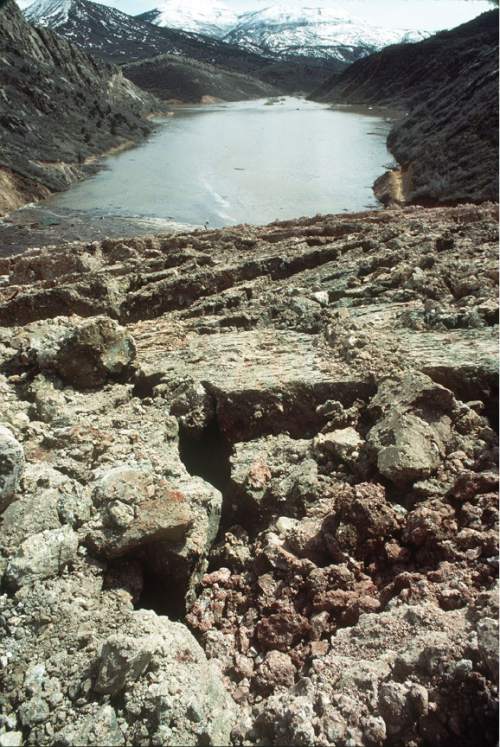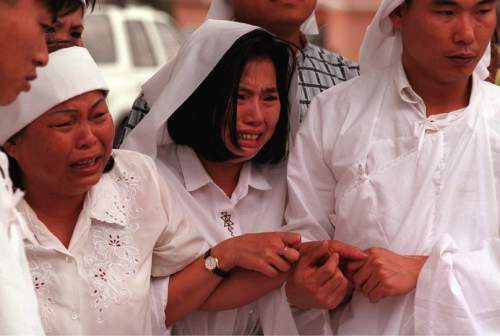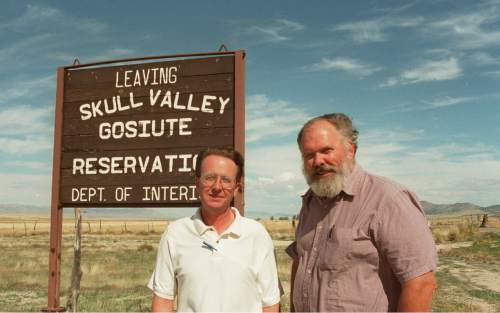This is an archived article that was published on sltrib.com in 2015, and information in the article may be outdated. It is provided only for personal research purposes and may not be reprinted.
Tim Kelly, a gentle giant who chronicled major Utah news events through his work as a longtime photographer for The Salt Lake Tribune, died Thursday of complications from Alzheimer's disease.
He was 68.
Kelly began his career at The Tribune in 1967 and retired in 1998. His legacy of memorable photographs includes iconic images of Gary Gilmore, executed in Utah in 1977, and Vickie Singer, arrested with her daughters after a 1988 standoff between police and her polygamist son-in-law, Adam Swapp.
"The definition of a really great photographer is one who makes the viewer feel as though they are present in that moment," said retired Tribune photographer Lynn Johnson, who spent his career working with Kelly.
"There was that incredible photo of Adam Swapp's wives," Johnson said. "It was almost mystical. We were right there watching those women in shackles taken into the federal courthouse."
Swapp had bombed the Kamas LDS Stake Center before the standoff. Fred House, a state corrections officer, was shot in the subsequent raid of the family's compound.
The standoff was among events documented by Kelly in the 1970s, '80s and '90s. Others included the Teton Dam disaster, the rise and fall of the Great Salt Lake, the Salt Lake City floods, the Barney Clark heart transplant, the cold fusion controversy and the Thistle mudslide in Spanish Fork Canyon.
Johnson said that Kelly, who lost his right eye as a boy, saw the world through a telephoto lens.
"For some people, that would be considered a handicap or a drawback, but Tim capitalized on it," said Johnson. "He brought us the most spectacular images because of his way of seeing the world."
Kelly also worked as a nationally known freelance photographer with images published in magazines throughout the world. He collaborated with former Tribune artists Mark Knudsen and Neil Passey on a humorous book called "Utah: Gateway to Nevada."
Knudsen once asked Kelly how he always seemed to be present when a great photo presented itself.
"Tim said, 'You have to have a pure heart,' " Knudsen recalled. "He was only half kidding."
In the days before digital photography, Kelly would spend hours printing photos in the darkroom at the former Tribune building on Salt Lake City's Main Street, often working into the wee hours of the morning.
Johnson remembered Kelly shooting a fire at Sam Weller's Zion Bookstore on Main Street.
"Most would have photographed the fire, gone back to print their photos and called it a wrap," said Johnson. "He went back and spent most of the night into the early morning. He stayed there and photographed every aspect of the fire, documented some of the rare volumes and what the fire meant. What set him apart is that he worked so much harder than the rest of us."
The former Judge Memorial Catholic High School football star could be an intimidating presence despite his good humor. But kids were naturally drawn to Kelly, who usually had them laughing with his Donald Duck imitation. He coached many youth baseball teams as well as The Tribune's co-ed softball team.
After retiring in February 1998, Kelly spent much of his free time on the Great Salt Lake marshes, often taking photos of the dramatic vistas west of Salt Lake City.
He is survived by his wife, Sharon, sons Patrick and Paul, daughter Jean, brothers Pat, Mike and Steve, and sister Joan Letley. Family members said a celebration of his life will be held later this spring.



